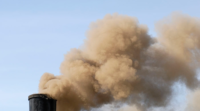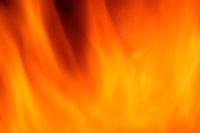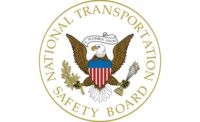Lack of onshore drilling regs a factor in fatal gas well blowout

The US Chemical Safety Board’s (CSB) investigation into an Oklahoma blowout that killed five workers blames the incident on a lack of regulations governing onshore drilling safety as well as shortcomings in safety management systems and industry standards utilized by the industry.
The CSB’s final investigation report into the Pryor Trust gas well explosion in Pittsburgh County calls on regulators, industry groups, the state of Oklahoma and companies to address such gaps.
| "Our investigation found significant lapses in good safety practices at this site. For over 14 hours, there was a dangerous condition building at this well. The lack of effective safety management at this well resulted in a needless catastrophe.” |
The CSB’s report determined that the cause of the blowout and rig fire was the failure of two preventive barriers that were intended to be in place to stop a blowout. Those were the primary barrier—hydrostatic pressure in the well, produced by drilling mud—and the secondary barrier—human detection of gas flowing into or expanding in the well and activation of the rig’s blowout preventer. The report explains that unplanned underbalanced drilling and tripping operations allowed a large quantity of gas to enter the well, and safety-critical operations called “flow checks,” used to determine if gas is in the well, were not performed.
CSB Interim Executive Kristen Kulinowski said, “Our investigation found significant lapses in good safety practices at this site. For over 14 hours, there was a dangerous condition building at this well. The lack of effective safety management at this well resulted in a needless catastrophe.”
Industry best practices recommend always having two protective barriers in place during drilling operations. Our investigation found that both of those barriers failed. The final report outlines several factors contributing to the loss of barriers including a lack of planning, training, equipment, skills and procedures. The investigation revealed that there are no regulations specifically developed for onshore oil and gas well drilling. Because oil and gas well drilling is exempted from the Occupational Safety and Health Administration’s (OSHA’s) Process Safety Management standard which governs safety for chemical processing facilities, OSHA has been utilizing the general duty clause – which “protects workers from serious and recognized workplace hazards” – but fails to address the unique safety hazards associated with drilling for oil and gas. The CSB urges OSHA to develop effective oversight that addresses the hazards unique to the onshore drilling industry.
A disabled alarm system
Furthermore, the CSB found that the drilling contractor failed to maintain an effective alarm system. Likely due to excessive “nuisance” or unnecessary alarms, the entire alarm system was disabled by rig personnel. Ultimately, the lack of critical alarms contributed to workers being unaware that flammable gas was entering the well during operations before the incident.
Investigator Lauren Grim said, “An effective alarm system is a method to help workers become aware of hazardous conditions, like gas entering the well. With the alarm system off, the safety of the operation solely relied on workers to either visually identify signs of the gas influx or calculate volume differences that could indicate gas influx—and in this case, neither method was effective, and workers were unaware of the very large gas influx into the well before the incident. As a result, the workers had little knowledge of the impending disaster.”
At the time of the blowout, three workers were in the driller’s cabin. Two other workers who were on the rig floor ran into the driller’s cabin during the blowout and fire. All five of these workers were killed.
Investigator Grim continued, “When the blowout mud and gas ignited, it created a massive fire on the rig floor. All five of the workers inside the driller’s cabin were effectively trapped because fire blocked the driller’s cabin’s two exit doors. Our investigation found that there is no guidance to ensure that an emergency evacuation option is present onboard these rigs or can protect workers in the driller’s cabin from fire hazards.”
As a result, the CSB is calling on the American Petroleum Institute (API) to address design improvements needed to protect driller’s cabin occupants from blowout and fire hazards. The report also recommends to API to create guidance on Alarm Management for the drilling industry, to help ensure alarm systems are effective in alerting drilling crews to unsafe conditions.
Interim Executive Dr. Kristen Kulinowski said, “As onshore oil and gas extraction grows, it is imperative that the industry is using proven and reliable safety standards and practices. If some of these safety practices had been in place, this tragedy could have been averted. Our report lays out a strong case for recognizing the hazards in this industry and ensuring the safety of its workers.”
The CSB is an independent, non-regulatory federal agency whose mission is to drive chemical safety change through independent investigations to protect people and the environment. The agency’s board members are appointed by the President and confirmed by the Senate.
CSB investigations look into all aspects of chemical incidents, including physical causes such as equipment failure as well as inadequacies in regulations, industry standards, and safety management systems. For more information, contact public@csb.gov.
Looking for a reprint of this article?
From high-res PDFs to custom plaques, order your copy today!









